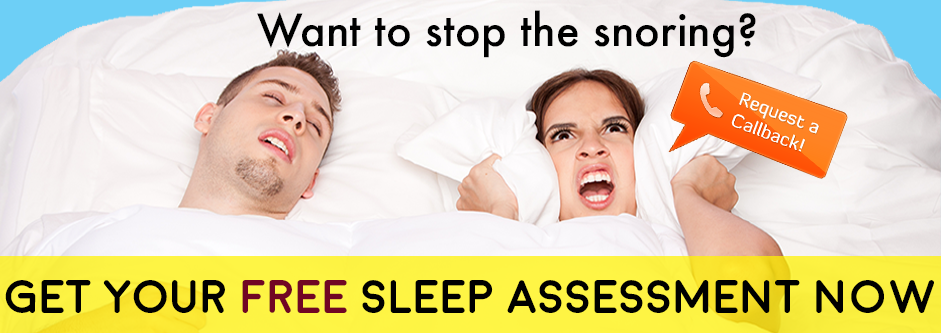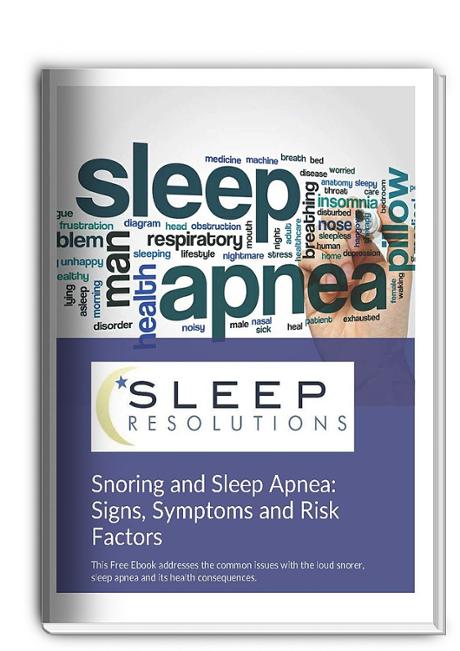
Obstructive sleep apnea (OSA) is a serious sleep condition that impacts nearly 22 million Americans according to the American Sleep Apnea Association. A sleep study is conducted to collect data to determine if a patient has OSA.
There are two types of sleep tests used to determine the presence and severity of sleep apnea.
The first is a laboratory-based, or an in-house, sleep test called a Polysomnography (PSG). The second is an at-home sleep test (HST). There are advantages to both of the types of sleep studies. Your sleep medicine provider will look at those advantages and weigh them against any potential drawbacks before discussing which kind of sleep study they recommend for you.
At Sleep Resolutions, we help diagnose and treat hundreds of patients suffering from sleep apnea to help improve their sleep health. Our patients often ask us which type of sleep study is in their best interest. Because we love educating and sharing our knowledge with our patients, we wanted to talk a little more about home sleep tests.
In this article, we are going to focus on the most common problems associated with home sleep tests and situations in which an in-lab Polysomnogram may be best for you.
What is a Home Sleep Test?
Sleep studies allow your doctor to diagnose sleep disorders such as OSA, narcolepsy, restless legs syndrome, insomnia, sleepwalking, and REM sleep behavior disorder. These sleep disorders cannot be diagnosed during a typical office visit and need conclusive data collected during a sleep study.
The home sleep study (HSS) occurs at home with equipment provided to you. The equipment includes sensors that register the apnea events. A doctor will review the data before a diagnosis is given.
Benefits of Home Sleep Studies
-
Comfort. The idea of another person watching over you while your sleep can be foreign or uncomfortable to some. A home sleep study keeps you in your own bed and allows you to go through your typical nighttime routine. Patients are given clear instructions on how to use the equipment to ensure best results.
-
Easy scheduling. This comes without saying, but you don’t have to worry about other patient’s being scheduled before you when you’re completing your sleep study in your own bed.
-
Ideal for severe cases of OSA. Typically, patients with more severe OSA have more difficulties falling asleep outside of their normal sleep environment. HSTs can capture the more severe apnea events without closer monitoring.
-
Cost. The number one question asked when we are discussing sleep studies is the cost. HSS are often more cost friendly for patients and are usually about a third of the cost of a PSG.
Common Problems of a Home Sleep Test
-
Home sleep tests do not rule out sleep apnea. In fact, HSTs are not necessarily meant to detect the presence of sleep apnea but aim to diagnose the severity of the disorder. If you have mild to moderate OSA, you might also be referred for a PSG in the office to capture more sensitive apnea events.
-
They only monitor breathing and oxygen levels. Not all sleep disorders cause breathing interruptions. Home sleep tests monitor breathing and do not capture data to diagnose other sleep disorders.
In-lab sleep studies monitor heart rates, brain activity, rapid eye movement, jaw muscle movements, breathing effort, leg muscle movement, and snoring.
In-lab sleep studies have more equipment to collect a broader range of information to diagnose all sleep disorders. -
They are not an ideal test for patients with mild to moderate sleep apnea. Rather than determining if the patient has sleep apnea or not, HST’s are meant to help determine the severity of sleep apnea in patients that most likely have severe sleep apnea.
-
They do not diagnose other medical conditions such as COPD, congestive heart failure, or other complex disorders that impact your breathing.
-
Home sleep tests cannot detect when you are sleeping or still awake. Again, they only monitor breathing and oxygen levels. Therefore, it can register events that are occurring while the patient is awake.
-
Human errors, incorrectly placed sensors, lost sensors, etc. Human mistakes happen, and patients do not complete home sleep tests every day like sleep technologist. Sensors put in the wrong places prevent accurate readings. Sensors can be pulled off, caught on bedding, or might not stick to the patient. Having the sensors correctly placed throughout the test is critical to successful results
-
Many home sleep test devices are designed to beep when a sensor falls off, or something is amiss with the equipment. If an error occurs throughout the night, the beeping can wake the patient causing more interrupts and inaccurate readings.
Tips to Ensure a Success and Accurate Home Sleep Test
-
Be honest about other medical conditions with your sleep medicine provider. If you have other medical conditions that impact your breathing a home sleep test might not be right for you.
-
Talk to your sleep partner about your sleep behaviors before scheduling a home sleep test. Discuss all those behaviors with your sleep medicine provider. You might have duel sleep disorders or might not have sleep apnea. If there is enough concern for a duel or an alternative diagnosis, you should not have a home sleep test.
-
Follow the instructions provided to you for using the equipment for the HST.
-
Have your sleep partner be a part of your HST. A sleep partner can help place the sensors correctly, be a second set of ears to ensure success with instructions, and even turn the device on once you have fallen asleep.
-
Avoid body sprays, gels, or hairsprays the day before your HST. These items can erode the gel on the sensors.
-
Do not drink alcohol or caffeine close to bedtime. Alcohol and caffeine cause interrupts in sleep patterns.
-
Stick to your regular sleep routine. Do not plan your HST on a night that you have late night evening plans or major events. Plan your HST on a night that is typical without abnormal interrupts.
Final Thoughts
Again, there are limitations to home sleep tests, and they do not work for everyone. It's important to be open and honest with your sleep medicine doctor about all your symptoms, even if they seem unrelated. Let the experts work for you.
Sleep Resolutions staff is here to help. If you have any questions about how to make your home sleep test, or any sleep study, more successful, reach out.










Leave a comment